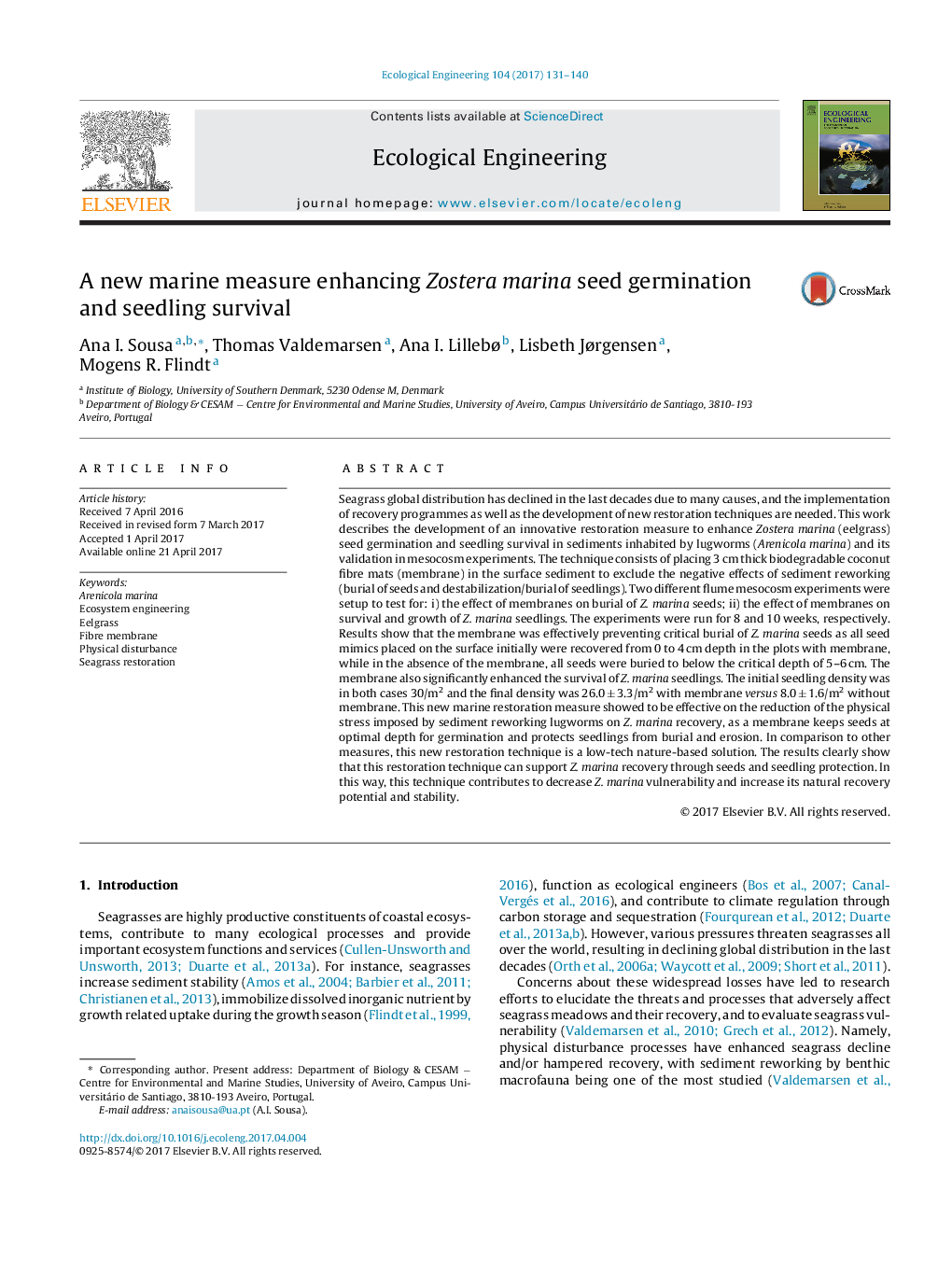| Article ID | Journal | Published Year | Pages | File Type |
|---|---|---|---|---|
| 5743951 | Ecological Engineering | 2017 | 10 Pages |
â¢Embedding a fibre membrane in the surface sediment reduces the lugworm physical disturbance on Zostera seeds and seedlings.â¢This new restoration measure has potential to increase Z. marina recovery from seeds and seedlings (sexual reproduction).â¢This low-tech nature-based solution was effective in mesoscosms experiments.â¢Field validation and up-scaling the technique is the next step to implement this measure that supports Z. marina recovery.
Seagrass global distribution has declined in the last decades due to many causes, and the implementation of recovery programmes as well as the development of new restoration techniques are needed. This work describes the development of an innovative restoration measure to enhance Zostera marina (eelgrass) seed germination and seedling survival in sediments inhabited by lugworms (Arenicola marina) and its validation in mesocosm experiments. The technique consists of placing 3 cm thick biodegradable coconut fibre mats (membrane) in the surface sediment to exclude the negative effects of sediment reworking (burial of seeds and destabilization/burial of seedlings). Two different flume mesocosm experiments were setup to test for: i) the effect of membranes on burial of Z. marina seeds; ii) the effect of membranes on survival and growth of Z. marina seedlings. The experiments were run for 8 and 10 weeks, respectively. Results show that the membrane was effectively preventing critical burial of Z. marina seeds as all seed mimics placed on the surface initially were recovered from 0 to 4 cm depth in the plots with membrane, while in the absence of the membrane, all seeds were buried to below the critical depth of 5-6 cm. The membrane also significantly enhanced the survival of Z. marina seedlings. The initial seedling density was in both cases 30/m2 and the final density was 26.0 ± 3.3/m2 with membrane versus 8.0 ± 1.6/m2 without membrane. This new marine restoration measure showed to be effective on the reduction of the physical stress imposed by sediment reworking lugworms on Z. marina recovery, as a membrane keeps seeds at optimal depth for germination and protects seedlings from burial and erosion. In comparison to other measures, this new restoration technique is a low-tech nature-based solution. The results clearly show that this restoration technique can support Z. marina recovery through seeds and seedling protection. In this way, this technique contributes to decrease Z. marina vulnerability and increase its natural recovery potential and stability.
